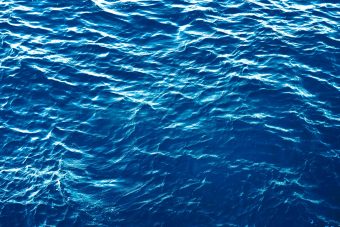
In recent years, the world has witnessed some of the most severe droughts ever, affecting different continents and millions of people.
In 2021, Madagascar experienced one of the worst droughts in its history, leading to a severe humanitarian crisis, while in the summer of 2022, Kenya, Somalia and Ethiopia experienced severe droughts that caused food and water shortages. Many livestock died, agriculture and crops were destroyed and the number of people who were affected by the food crisis exceeded 20 million. It did not rain until the middle of the year in the mentioned parts of East Africa and according to the information at the time, it did not rain in the north of Kenya for over two years.
Amazonia, the United States, Canada, Argentina and Paraguay were also hit, with the droughts in the latter two countries negatively affecting hydropower and agricultural production.
The Mediterranean and southern Europe are other critical points, where the temperature is rising faster than average. North Africa, Italy, Spain and Greece are suffering from a lack of rainfall, so last summer Greece had several weeks of raging forest fires, while certain areas in Spain declared a state of emergency. If we consider that rainfall has been below average for three years now and that temperatures are rising, the problem becomes much more obvious.
The Drought in the Mediterranean – January 2024 report, published by the European Commission’s Joint Research Centre (JRC) and the European Drought Observatory (EDO), looks in detail at the impact of droughts on these regions.
More:
- EU DIRECTIVE WILL ESTABLISH THE POLLUTER PAYS PRINCIPLE FOR WATER TREATMENT
- NEW EU STANDARDS – WHERE IS THE BEST DRINKING WATER?
- FROM JAMAICA TO THE SAHARA: THE STRUGGLE FOR WATER RESOURCES
Prolonged droughts, caused by a combination of above-average temperatures, hot spells and a lack of rainfall, have caused severe conditions in the Mediterranean region, including parts of Italy, Spain, Malta, as well as Morocco, Algeria and Tunisia. The report also points to seasonal forecasts predicting a warmer spring, which could further worsen the situation.
This January, a state of emergency was declared in Catalonia, accompanied by stricter restrictions on water use, after water supplies fell below 16 per cent. In the same context, the water reservoirs in the Algarve, in the south of Portugal, reached their lowest levels, which necessitated restrictions on water consumption, according to the European Commission’s website.

kdekiara)
The situation was equally alarming in Italy, where reservoirs in Sicily recorded below-normal levels, which again led to the rationalization of water consumption to ensure that basic needs were met.
Estimates showed that Sardinia’s water reservoirs were at less than half their capacity in December 2023.
Morocco has experienced six consecutive years of drought, which has led to drastically low water levels in its reservoirs. In response to the crisis, the Moroccan government banned the use of water for washing streets, and irrigating public parks and certain agricultural areas.
As we wrote earlier, last summer the average temperature of the planet was the hottest on record – above 17 degrees Celsius.
There is a pressing need to adapt strategies for water management and sectors that depend on freshwater, such as agriculture and drinking water production, as well as to invest in drought early warning systems, increase the efficiency of water use and switch to more drought- resistant crop varieties.
Energy portal


